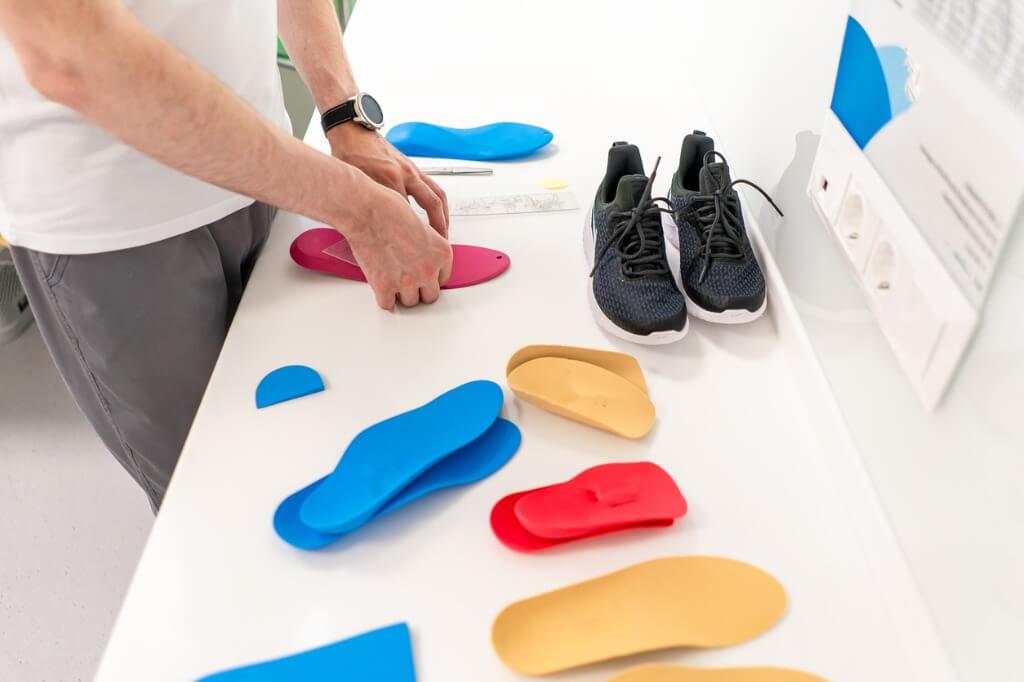
Orthotics have become extremely common in the last 20 years. However, many people don’t understand what they are, how they should be made, and what to expect when being assessed and fitted.
Here is a brief attempt at demystifying the world of orthotics to ensure people get what they need and avoid the common problems arising from improperly fitted orthotics.
What Is A Foot Orthotic?
A foot orthotic is a device that can be discreetly inserted into your footwear to help support, align, prevent and accommodate foot abnormalities and improve the foot function.
When used with appropriate footwear, it can help relieve various foot and lower limb problems, including:
- Heel pain
- Arch pain
- Forefoot pain
- Shin splints
- Knee pain
Foot orthotics can also help address foot and lower limb pain. It can also alleviate complications from health conditions such as diabetes and arthritis.
There are two basic types of foot orthotics, Over-the-Counter and Custom.
What Is A Foot Orthotic?
A foot orthotic is a device that can be discreetly inserted into your footwear to help support, align, prevent and accommodate foot abnormalities and improve the foot function.
When used with appropriate footwear, it can help relieve various foot and lower limb problems, including:
- Heel pain
- Arch pain
- Forefoot pain
- Shin splints
- Knee pain
Foot orthotics can also help address foot and lower limb pain. It can also alleviate complications from health conditions such as diabetes and arthritis.
There are two basic types of foot orthotics, Over-the-Counter and Custom.
Over-the-Counter Devices (OTC)
These are generic devices that are mass-produced and sold through pharmacies, grocery stores, and other retail shops. You can find higher-quality OTC devices through medical clinics, but they are still not as supportive or corrective as custom-made orthotics.

Custom-Made Orthotics
Unlike over-the-counter devices, a custom-made foot orthotic is made specifically for the patient following a foot care specialist’s in-depth assessment of their feet and legs. An orthotic is a handy tool when constructed correctly and dispensed by a practitioner specialising in feet.
Orthotics as we know them should be correctly referred to as “foot orthoses”. Technically, an orthotic can be made for any part of the body, but custom foot orthoses have been dispensed with such prevalence that “orthotic” has come to mean “foot orthoses.”
What to Expect When Getting Orthotics
A full assessment should be performed by a foot care specialist, which will allow them to determine what type of orthotic will best suit your needs. The practitioner should take a very detailed verbal history to understand the problem. Removing shoes and socks allows for a proper visual inspection of the feet and lower legs. Assessing the standing posture and gait is critical to creating the most effective orthotic.
If foot orthoses are deemed necessary, a 3-D cast of both feet should be taken to build an orthotic. The mould helps create a custom-made orthotic that fits the patient’s exact foot shape and contours. It is essential to be aware of how you are assessed as the orthotic industry is seeing an increase in improper assessments and unreliable casting techniques. Computer pressure plates that people stand on or walk over are a poor casting technique as they don’t capture the exact contour of the foot, leading to guesswork when the orthotic is built. Not only does this lead to an ineffective orthotic, but insurance companies generally do not cover orthotics made from a two-dimensional cast.
Other Foot Orthotic Tips
Quality of Footwear
A foot orthotic is only as good as the shoe it goes into; the shoe, therefore, provides the foundation for the orthotic. Wearing appropriate footwear is imperative, as the footwear itself is an important treatment method.
A foot orthotic is less effective when placed in inferior footwear as the shoe may work against the orthotic features. If your orthotic does not have a proper foundation, it will not be able to function correctly. When you see your foot care specialist, take your shoes to ensure they are suitable for orthotics.
Getting Used to the Orthotic
Initially, a new foot orthotic may feel intrusive, and it may take you a few weeks to get accustomed to it. Canadian Certified Pedorthists often recommend gradually introducing the orthotic into your life. If an adjustment is required, it would be better to have the practitioner who prescribed the orthotic alter it on sight rather than send it back to a lab for adjustment by someone who has never seen you.
A foot orthotic should never be painful. If your orthotic is causing pain or you feel that you cannot get used to it, stop wearing it and contact your Canadian Certified Pedorthist.
Orthotic Lifespan
The lifespan of a foot orthotic varies from patient to patient. The lifespan of the orthotic depends on various factors, including the material used to make the foot orthotic, the patient’s foot structure, activity levels, age and physical condition. The lifespan of a foot orthotic should not be measured by when the cover material wears out but by how long the orthotic meets the foot’s changing needs for support, correction and pressure redistribution. If your symptoms begin to return, it is good to have your orthotic reassessed to determine if modifications or a new device are necessary.



